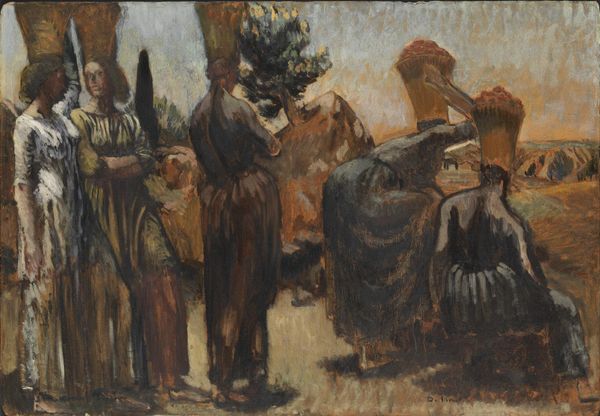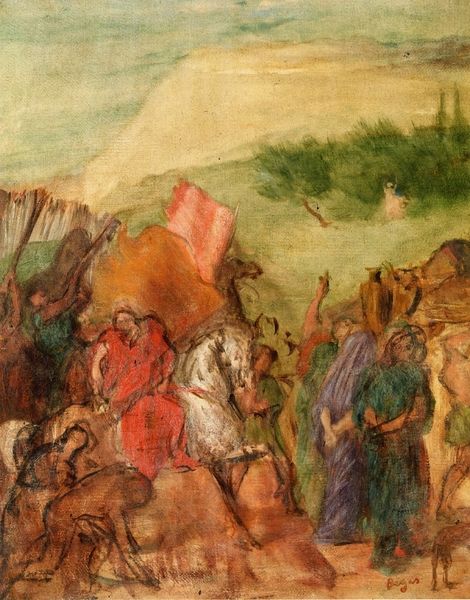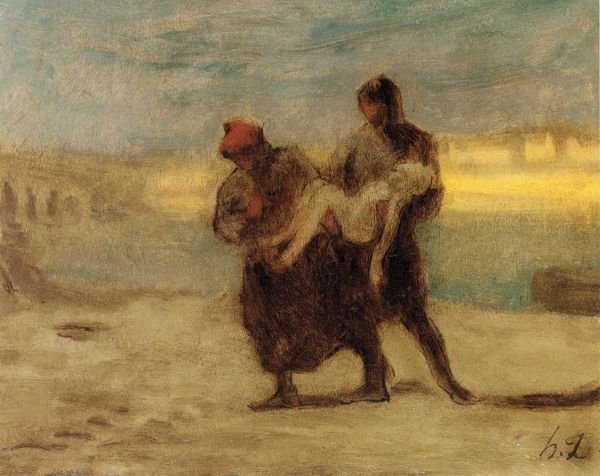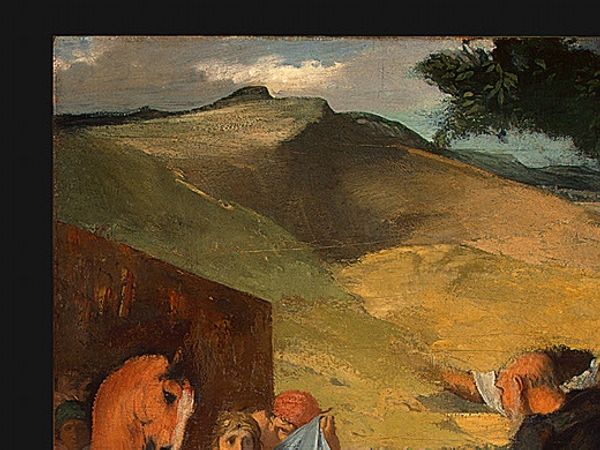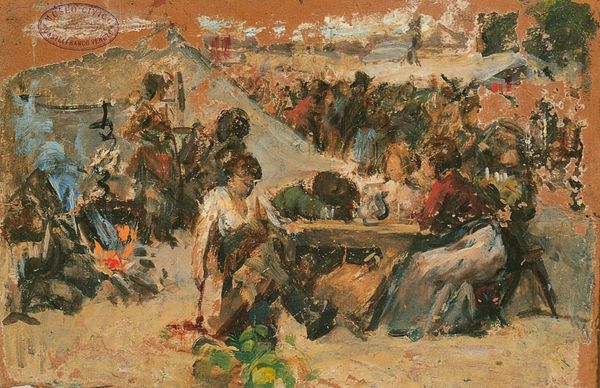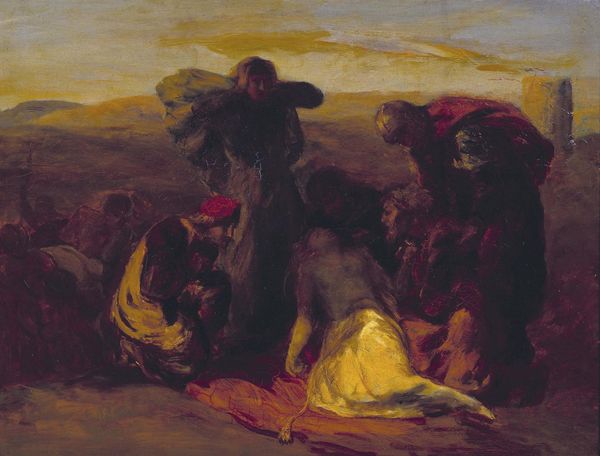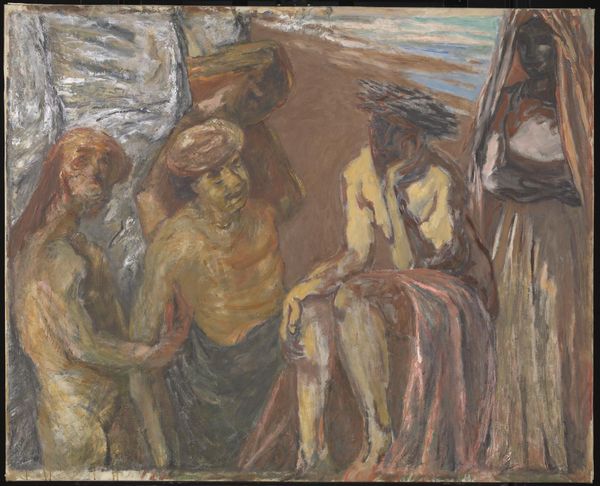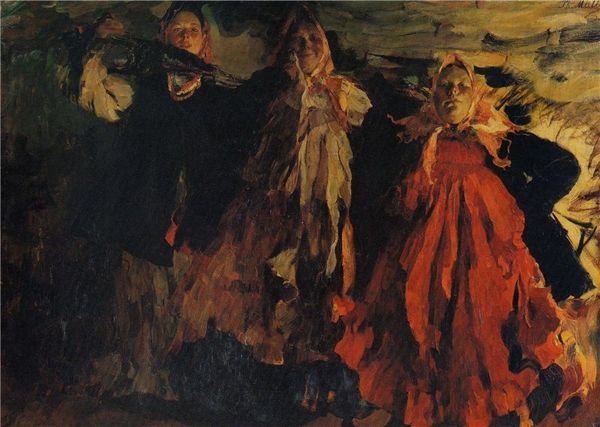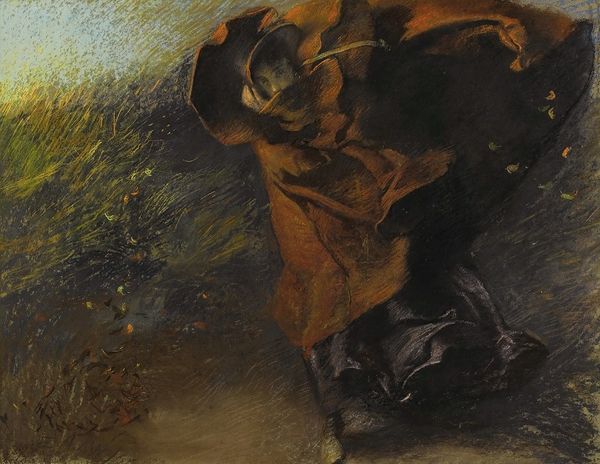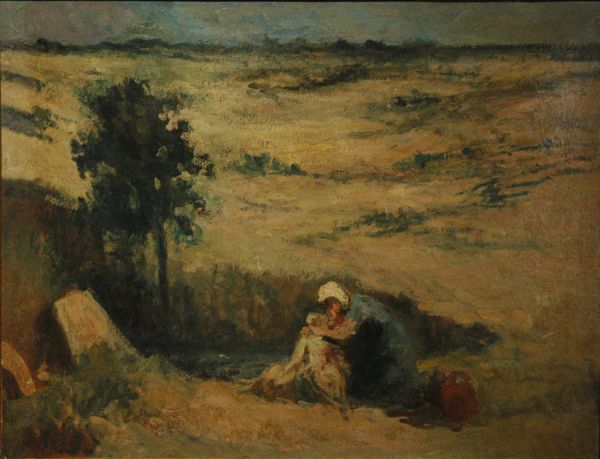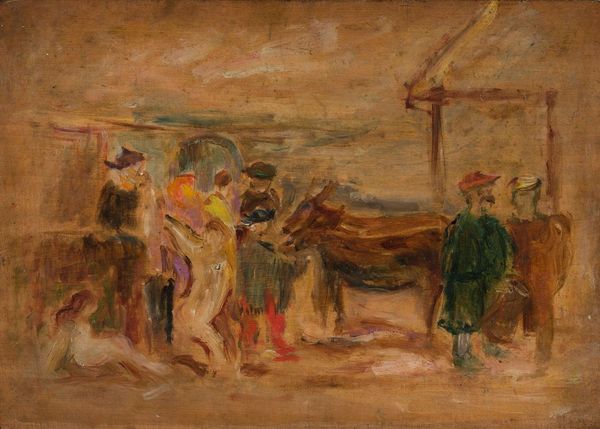
drawing, pastel
#
portrait
#
drawing
#
landscape
#
figuration
#
oil painting
#
pastel
#
history-painting
#
academic-art
Copyright: Public domain
Curator: I see a flurry of earth tones. The ochre and russet shades lend a feeling of baked earth, immediately making me think of sun-drenched afternoons in some bygone Mediterranean locale. It's both captivating and, strangely, melancholic. Editor: Precisely. This detail is taken from Edgar Degas’s "Alexander and Bucephalus," completed in 1861. It’s an oil painting, and embodies the academic style—evident in its careful composition and focus on historical narrative. Curator: You know, "academic" always feels like such a sterile term. Look at how those figures in the background dissolve into the landscape! The tension between precision and looseness...it feels so human. So very, very Degas! Editor: True. We observe here an early engagement with movement and light. Semiotically, consider the obscured cityscape. It isn't about glorifying Alexander's conquest but about embedding the hero within the fleeting nature of time. Curator: He always was interested in things beyond traditional art back then. Did he maybe sense even this glorious moment in history was just…a blink? You know? Look, maybe he couldn’t have foreseen how it would impact everyone, but he had a deep personal need to get all this down as rawly and purely as possible—the feeling in the figures and horses is incredible. Editor: Degas constructs his painting with layering, contrasting light with shadows to give mass. We get a glimpse of something new from what others see as traditional, such as history or conquest paintings. Curator: I suppose it invites me to think, what details am I overlooking today, what quiet beauty might be escaping my notice, or maybe which people am I overlooking. Degas had his concerns back then, so do I now. Thanks for your careful way of seeing today. Editor: Yes, thanks for expressing those feelings. The detail reminds us that Degas’s works, in essence, ask the observer to reconcile past narratives with current sensations.
Comments
No comments
Be the first to comment and join the conversation on the ultimate creative platform.
